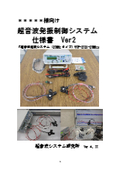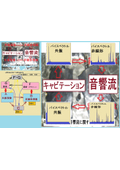Surface modification technology (stress relaxation) of ultrasonic beauty devices.
The Ultrasonic System Research Institute has developed (and published) methods to apply technologies using ultrasound and fine bubbles/microbubbles to ultrasonic beauty devices for:
1) Techniques to relax and homogenize residual stress on component surfaces
2) Techniques to remove microscopic burrs
Through the technology that relaxes surface residual stress using ultrasound and microbubbles, improvements in fatigue strength against metal fatigue can be achieved, leading to the homogenization of the ultrasonic beauty device surface and the efficiency of ultrasonic oscillation and propagation. We have experienced significant changes in the usage conditions of ultrasound (dynamic characteristics of propagation frequency).
In particular, the ultrasonic sound pressure level and propagation frequency vary greatly depending on the edge treatment of the metal parts that come into contact with the skin. By performing homogenization treatment, stable reproducibility and long lifespan can be realized. (This has been developed from achievements in ultrasonic cleaning.)
This technology is offered as a consulting service.
Ultrasonic propagation characteristics:
1) Detection of vibration modes (changes in self-correlation)
2) Detection of nonlinear phenomena (changes in bispectrum)
3) Detection of response characteristics (impulse response)
4) Detection of interactions (power contribution rate)


Inquiry about this news
Contact Us Online
Related Documents
Related product
Related catalog(14)

































